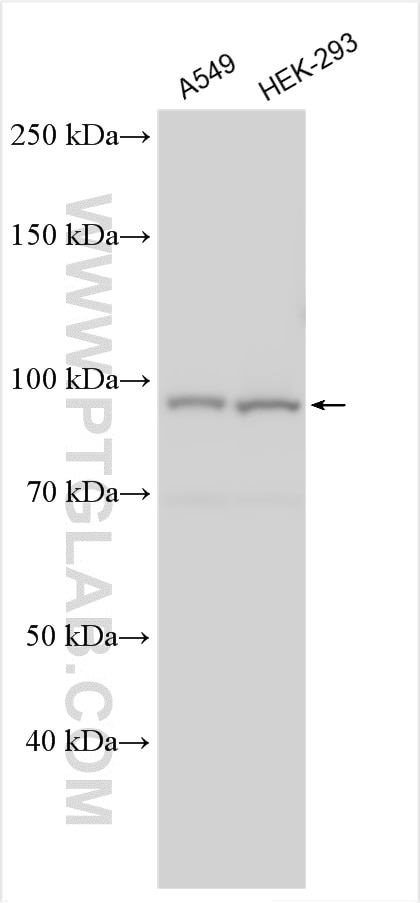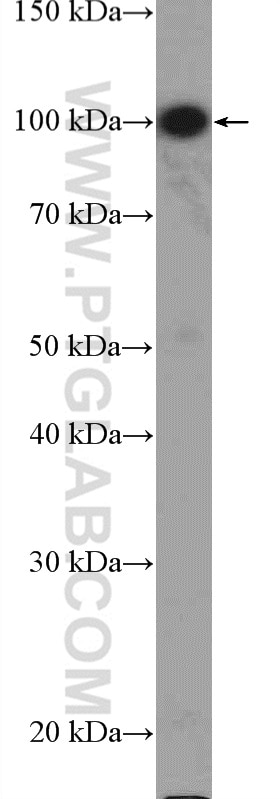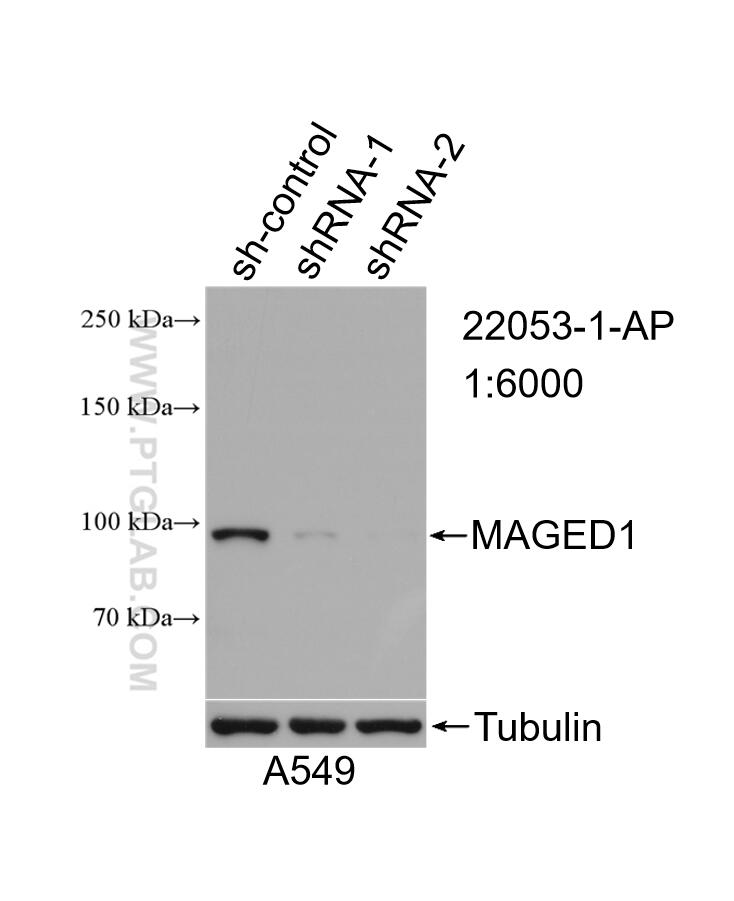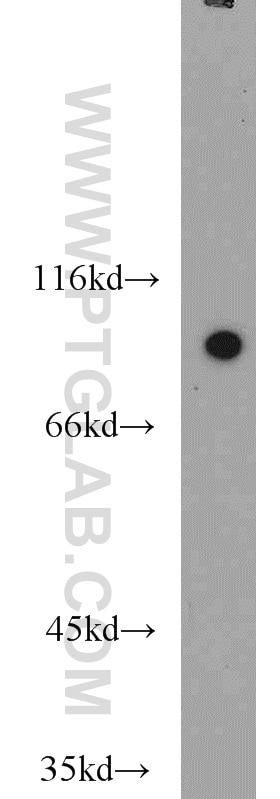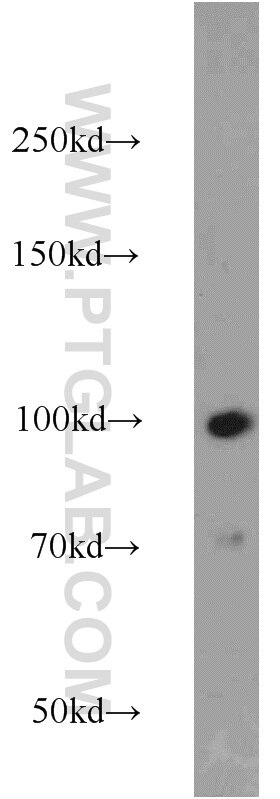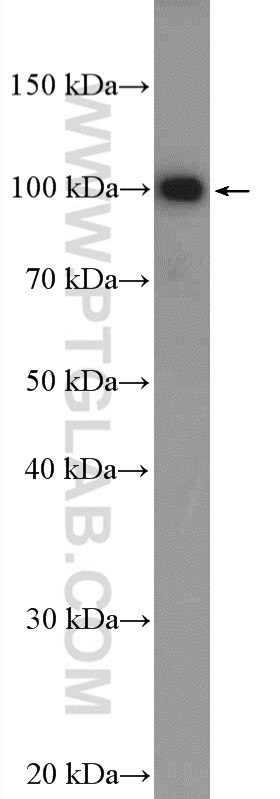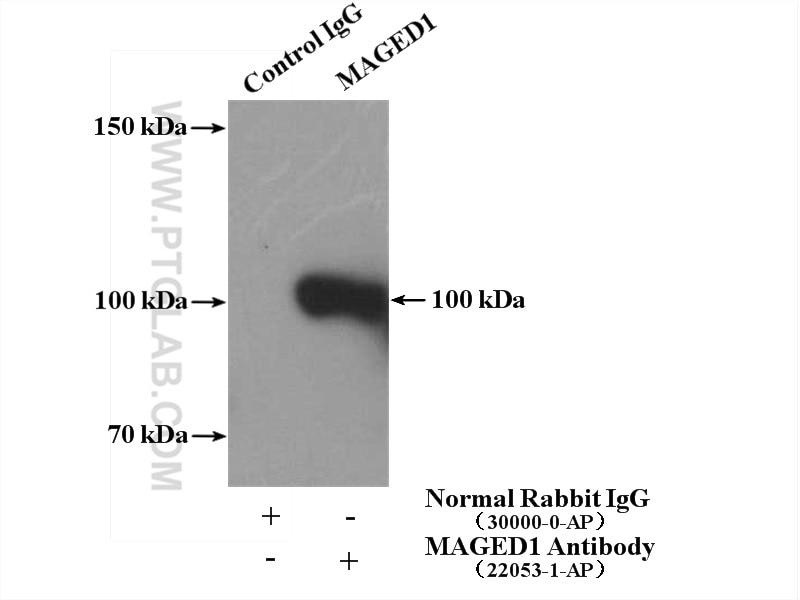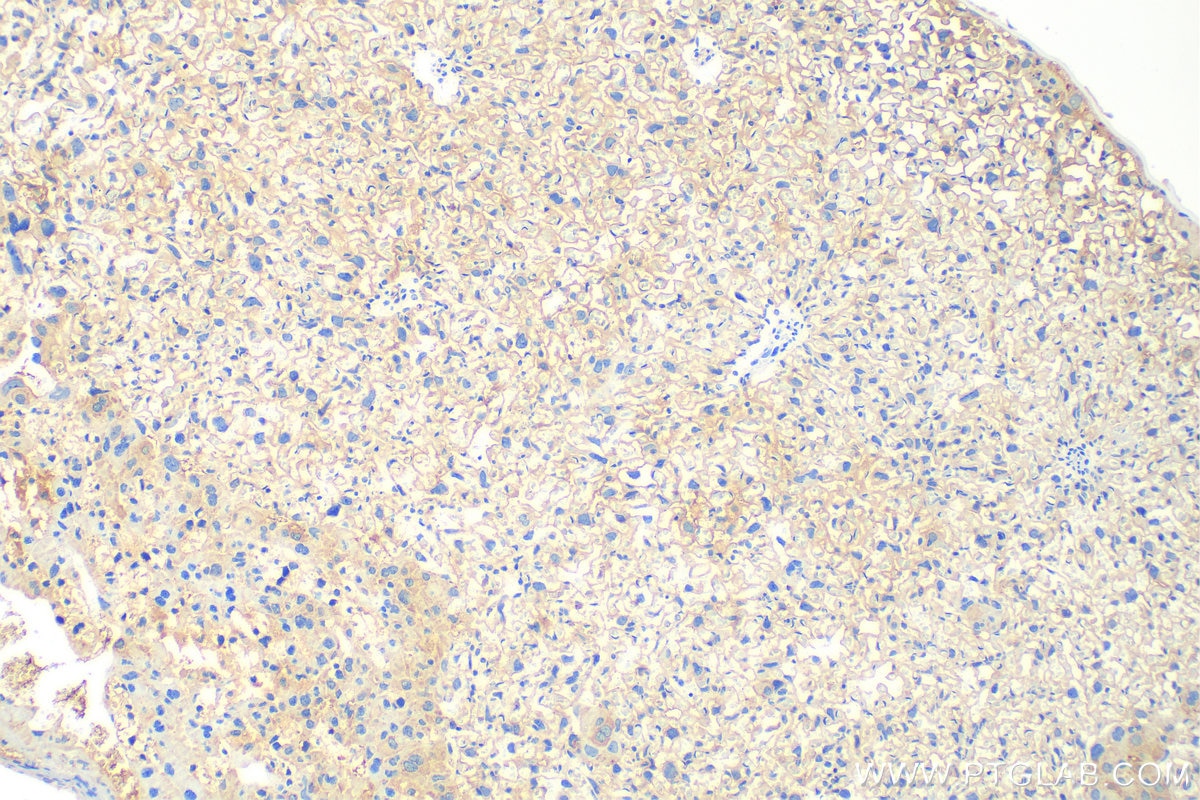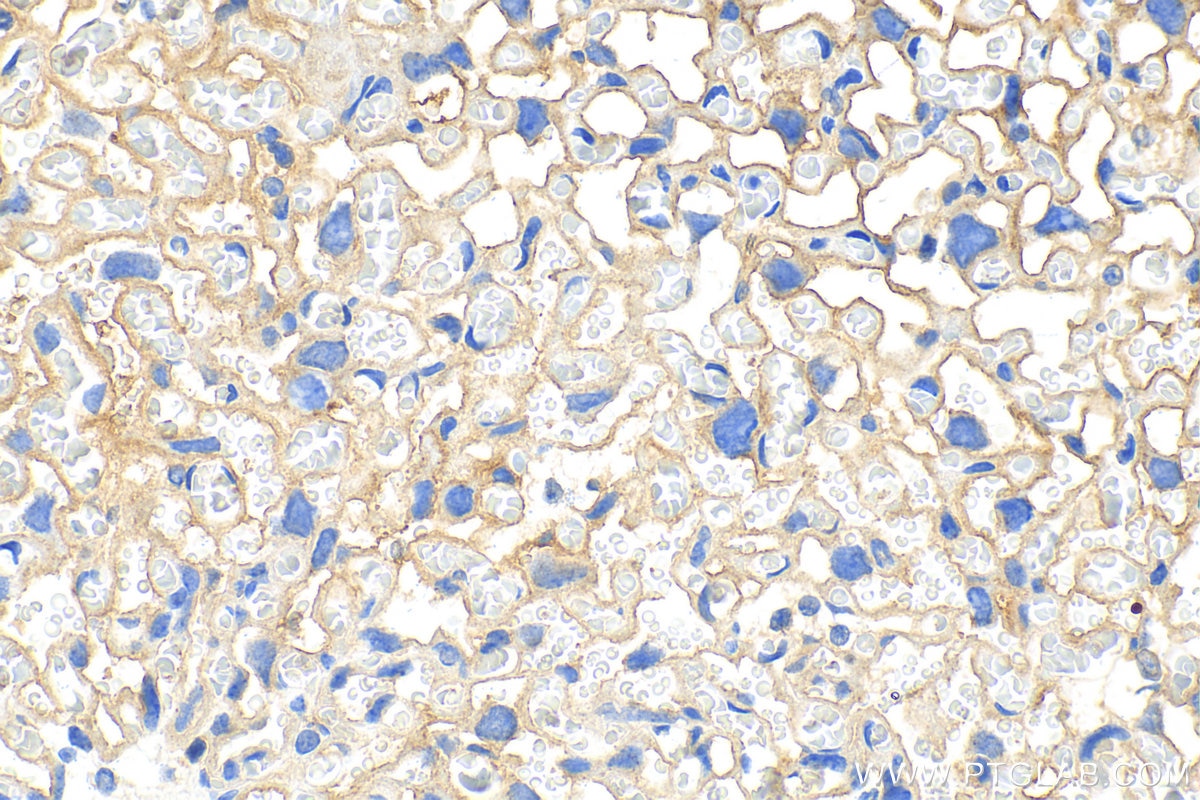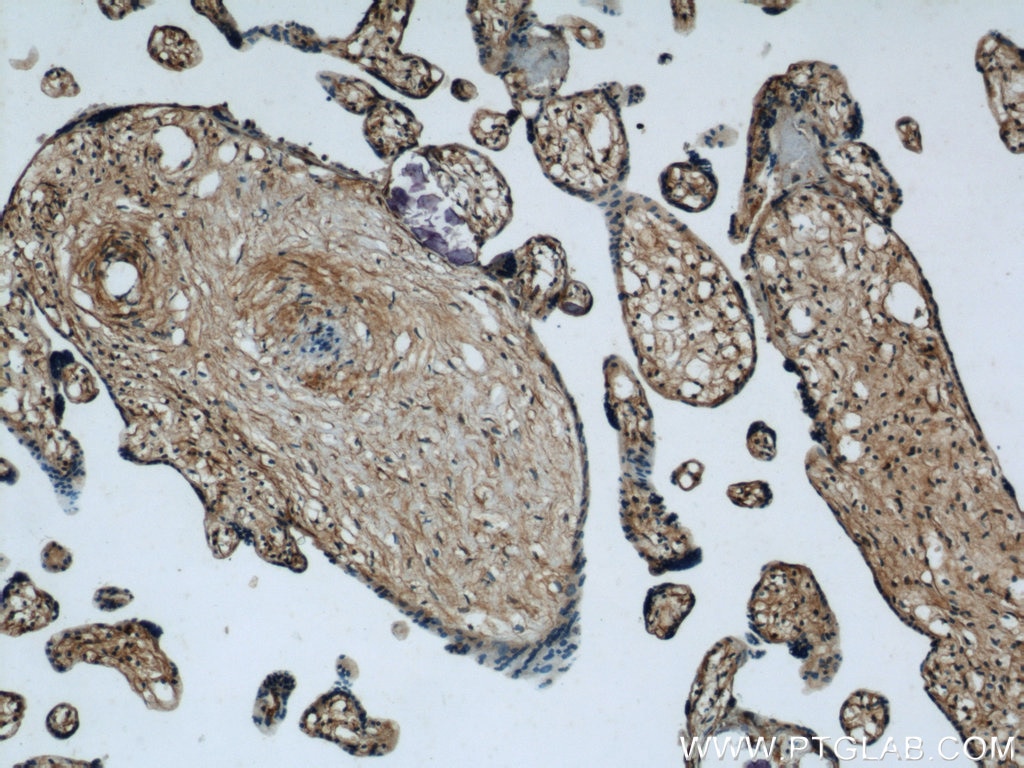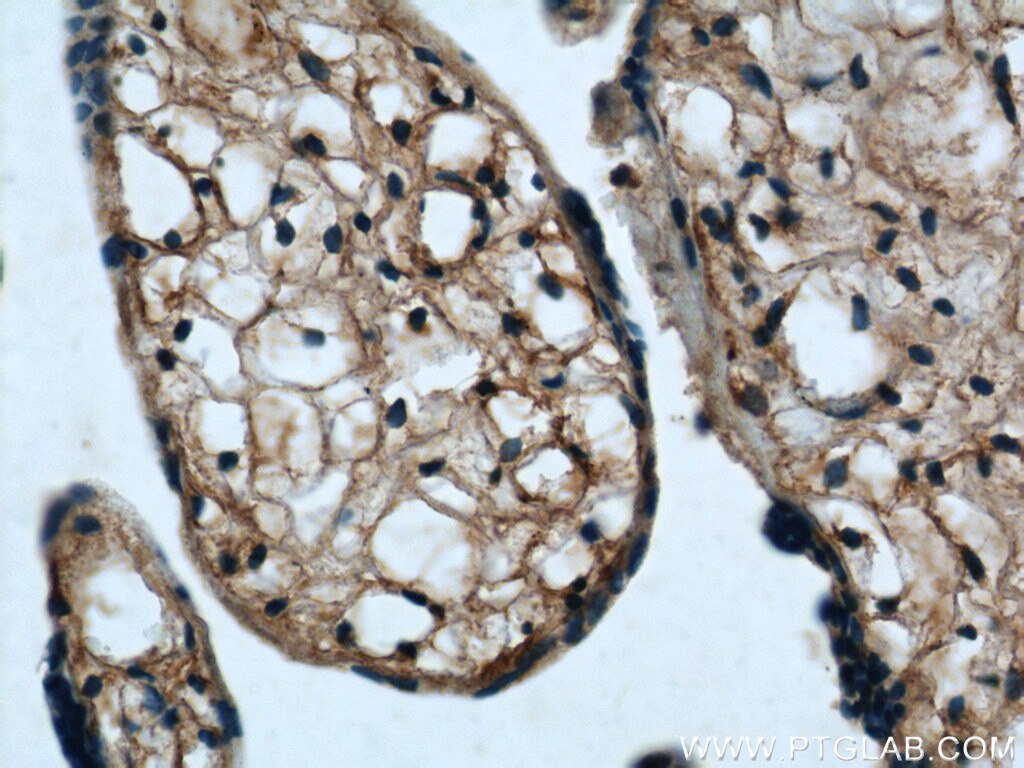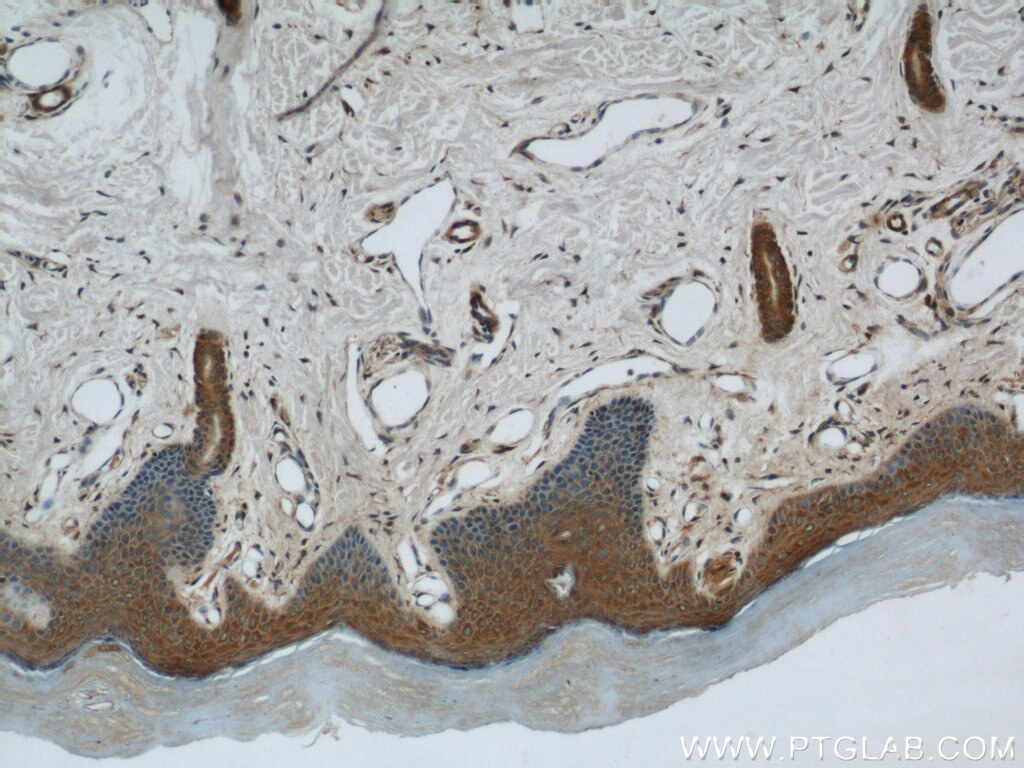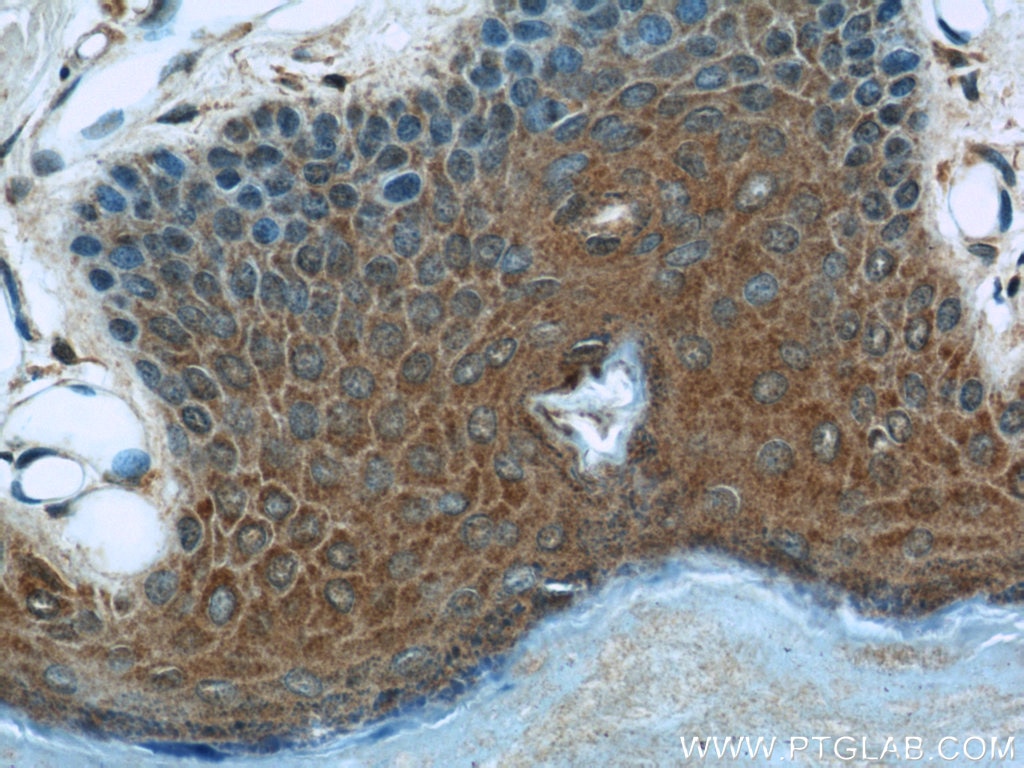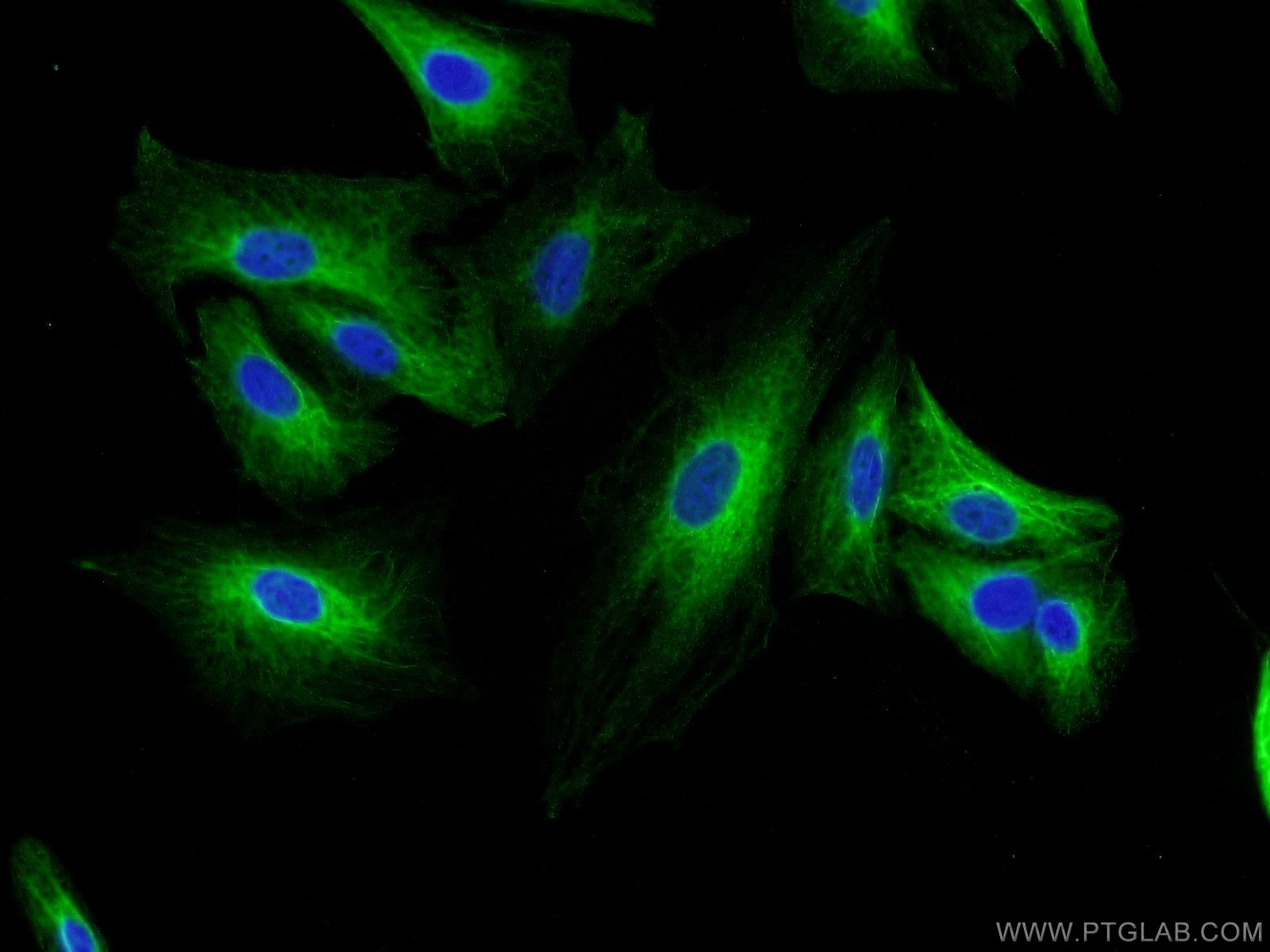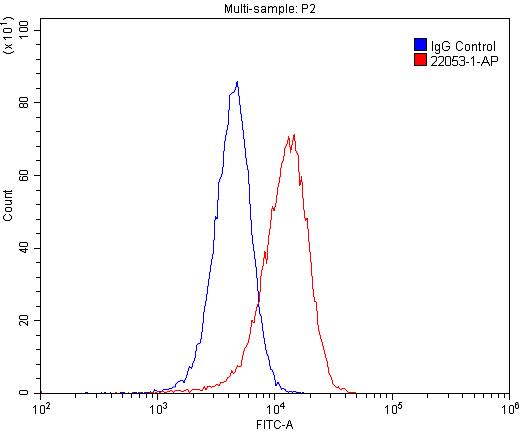- Featured Product
- KD/KO Validated
MAGED1 Polyklonaler Antikörper
MAGED1 Polyklonal Antikörper für FC, IF, IHC, IP, WB, ELISA
Wirt / Isotyp
Kaninchen / IgG
Getestete Reaktivität
human, Maus, Ratte
Anwendung
WB, IP, IHC, IF, FC, ELISA
Konjugation
Unkonjugiert
Kat-Nr. : 22053-1-AP
Synonyme
Galerie der Validierungsdaten
Geprüfte Anwendungen
| Erfolgreiche Detektion in WB | A549-Zellen, HEK-293-Zellen, Maus-Plazenta-Gewebe |
| Erfolgreiche IP | A549-Zellen |
| Erfolgreiche Detektion in IHC | Maus-Plazenta-Gewebe, humanes Hautgewebe, humanes Plazenta-Gewebe Hinweis: Antigendemaskierung mit TE-Puffer pH 9,0 empfohlen. (*) Wahlweise kann die Antigendemaskierung auch mit Citratpuffer pH 6,0 erfolgen. |
| Erfolgreiche Detektion in IF | A549-Zellen |
| Erfolgreiche Detektion in FC | HeLa-Zellen |
Empfohlene Verdünnung
| Anwendung | Verdünnung |
|---|---|
| Western Blot (WB) | WB : 1:2000-1:12000 |
| Immunpräzipitation (IP) | IP : 0.5-4.0 ug for 1.0-3.0 mg of total protein lysate |
| Immunhistochemie (IHC) | IHC : 1:200-1:800 |
| Immunfluoreszenz (IF) | IF : 1:20-1:200 |
| Durchflusszytometrie (FC) | FC : 0.20 ug per 10^6 cells in a 100 µl suspension |
| It is recommended that this reagent should be titrated in each testing system to obtain optimal results. | |
| Sample-dependent, check data in validation data gallery | |
Veröffentlichte Anwendungen
| KD/KO | See 2 publications below |
| WB | See 4 publications below |
| IHC | See 2 publications below |
| IF | See 1 publications below |
Produktinformation
22053-1-AP bindet in WB, IP, IHC, IF, FC, ELISA MAGED1 und zeigt Reaktivität mit human, Maus, Ratten
| Getestete Reaktivität | human, Maus, Ratte |
| In Publikationen genannte Reaktivität | human, Maus |
| Wirt / Isotyp | Kaninchen / IgG |
| Klonalität | Polyklonal |
| Typ | Antikörper |
| Immunogen | MAGED1 fusion protein Ag17047 |
| Vollständiger Name | melanoma antigen family D, 1 |
| Berechnetes Molekulargewicht | 834 aa, 92 kDa |
| Beobachtetes Molekulargewicht | 95-100 kDa |
| GenBank-Zugangsnummer | BC014070 |
| Gene symbol | MAGED1 |
| Gene ID (NCBI) | 9500 |
| Konjugation | Unkonjugiert |
| Form | Liquid |
| Reinigungsmethode | Antigen-Affinitätsreinigung |
| Lagerungspuffer | PBS mit 0.02% Natriumazid und 50% Glycerin pH 7.3. |
| Lagerungsbedingungen | Bei -20°C lagern. Nach dem Versand ein Jahr lang stabil Aliquotieren ist bei -20oC Lagerung nicht notwendig. 20ul Größen enthalten 0,1% BSA. |
Hintergrundinformationen
MAGED1 (also known as NRAGE or Dlxin-1) is a member of the type II melanoma antigen (MAGE) family of protein. MAGED1 can interact with the nerve growth factor receptor p75NTR, antagonize the association of p75NTR with TrkA, inhibit cell cycle progression, and facilitate p75NTR-mediated apoptosis (PMID: 10985348). It has been reported that MAGED1 binds Dlx5 and regulates its transcriptional function. In vivo, MAGED1 binds not only Dlx5 but also Dlx7 and Msx2 and forms homomultimers (PMID: 11084035). MAGED1 knockout mice show depressive behavior and impairments of circadian rhythm (PMID: 20300063; 23314527). Three transcript variants encoding two different isoforms (86kDa and 92 kDa) have been found for the gene of MAGED1.
Protokolle
| Produktspezifische Protokolle | |
|---|---|
| WB protocol for MAGED1 antibody 22053-1-AP | Protokoll herunterladen |
| IHC protocol for MAGED1 antibody 22053-1-AP | Protokoll herunterladen |
| IF protocol for MAGED1 antibody 22053-1-AP | Protokoll herunterladen |
| IP protocol for MAGED1 antibody 22053-1-AP | Protokoll herunterladen |
| Standard-Protokolle | |
|---|---|
| Klicken Sie hier, um unsere Standardprotokolle anzuzeigen |
Publikationen
| Species | Application | Title |
|---|---|---|
Clin Transl Med Saikosaponin-d impedes hippocampal neurogenesis and causes cognitive deficits by inhibiting the survival of neural stem/progenitor cells via neurotrophin receptor signaling in mice. | ||
Biochim Biophys Acta Mol Cell Biol Lipids Diacylglycerol kinase δ destabilizes serotonin transporter protein through the ubiquitin-proteasome system. | ||
Tumour Biol Identification of novel NRAGE involved in the radioresistance of esophageal cancer cells.
| ||
Gene NRAGE confers poor prognosis and promotes proliferation, invasion, and chemoresistance in gastric cancer.
|
